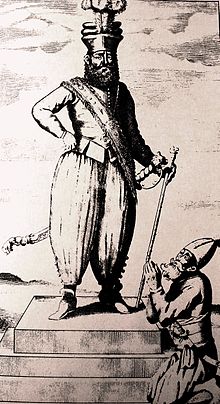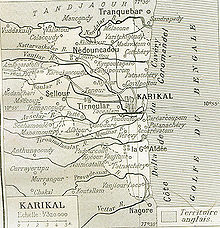- Mukkara Hatana
-
The Mukkara Hatana is an old palm leaf manuscript from Sri Lanka now in the British Museum. It is in the Hugh Neville collection of the British Museum and is catalogued as Or. 6606 (53). It is in the style of other local histories such as Kadaim-poth, Vitti-poth etc.
The story in the Mukkara Hatana is also found in Rajasimha Kale Pravrti and Vanni Upatha in much the same form. These are also in the British Museum and catalogued as Or. 6606 (54) and Or. 6606 (139). These palm leaf manuscripts had been preserved with much care by the descendants of the Karava chiefs of Negombo
The territory where the events took place and in which the Dambadeniya Kindgon was also located
Hugh Neville had also discovered another version of this manuscript preserved with great care by the Karavas of Tamankaduwa. Their copy additionally says that their ancestors betrayed the Karava leaders and the Portuguese, and helped King Rajasinghe II to capture the port of Negombo in 1646 and were rewarded with Egoda Pattu and several villages in the Matale district as fiefs.
The Mukkara Hatana is an account of the defeat of the Mukkuvar by the Karavas in the Saka era 1159 and the taking of the fort of Puttalam after a three month siege. They are said to have proceeded to Nagapattinam where one of the royal leaders Manikka Thalavan was killed. That fort too is said to have been taken after the loss of 1,500 troops.
The leaders in this operation were Vaccanatu Devarir (Lord of Vacca (ie Kausambi ), where Nemi Sakkaram transferred his capital from Hastinapur ), Kurulula Nattu Devar (Lord of the Kuru country), Manikka Thalaivan, Adirasa Adappan, Varna Suriya Thomaram Nathan Adappan, Kurukula Surya Mudiyanse, Paradakula Suriya Mudiyanse, and Arasakula Suriya Mudiyanse . These were all chiefs of the Karavas from Kanchi, Kilakarai and Kaveri Puttanum. They had settled between Puttalam and Negombo.
The year of their arrival Saka 1159 poses some problems as it takes us back to the Dambadeniya period of Sri Lanka’s history and Parâkkamabâhu II 1234-1267. Although the events are said to have occurred during the reign of Parakramabâhu VI 1412-1467 of Kotte. However as the date appears in three versions it is difficult to dismiss it as a copyist error. It may well be a mix up of the kings when recording a centuries old tradition. But since the manuscript gives the exact astrological time of the arrival as: the 15th Meena Rivi, Panchami lat Rivi dina, Rehena Nakatha, Simha Lagna, Guru Horava , a scholar with knowledge of the old calendar could easily unravel this issue.
Categories:- History of Sri Lanka
- Sri Lankan society
Wikimedia Foundation. 2010.



